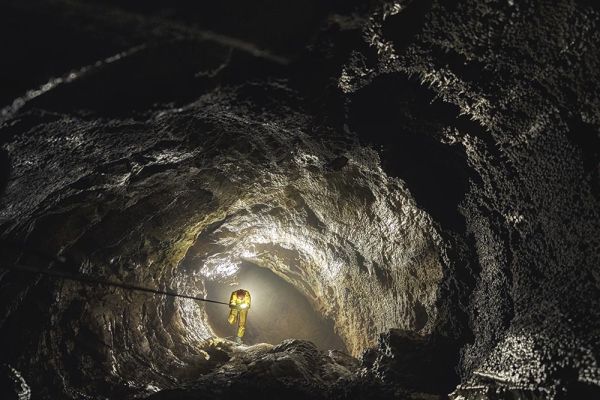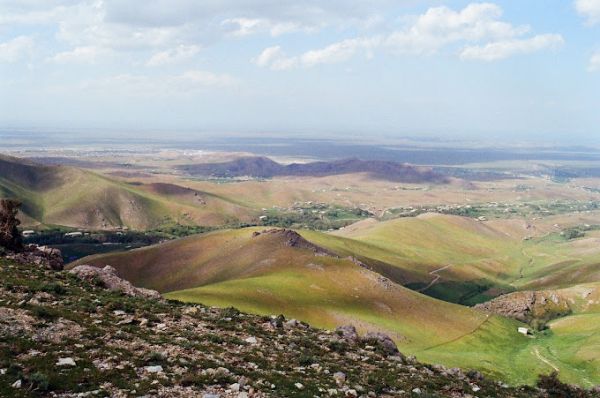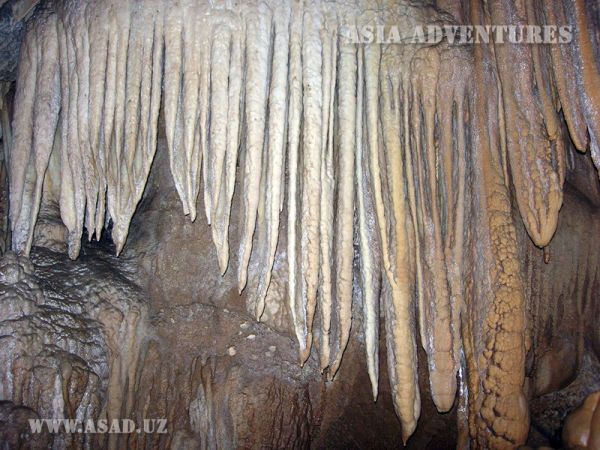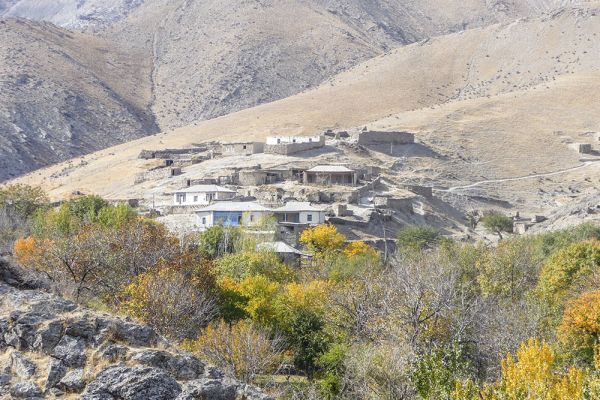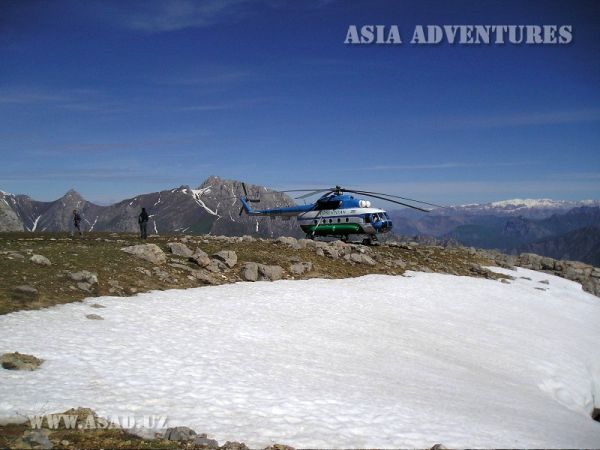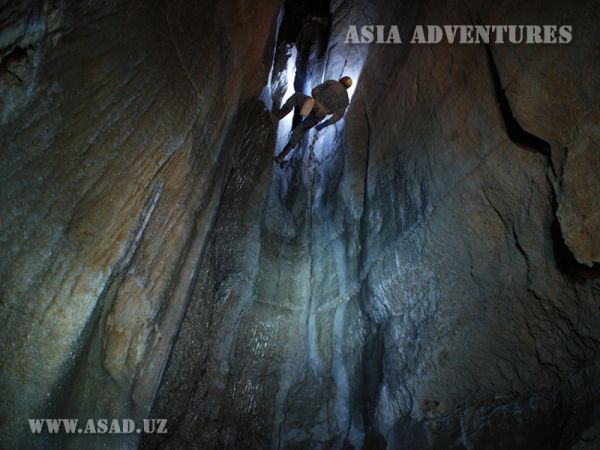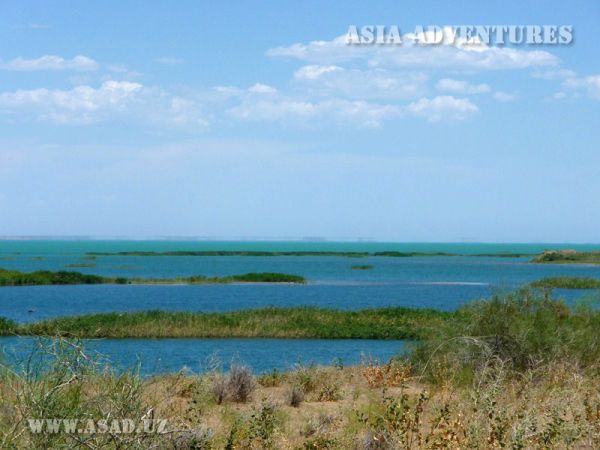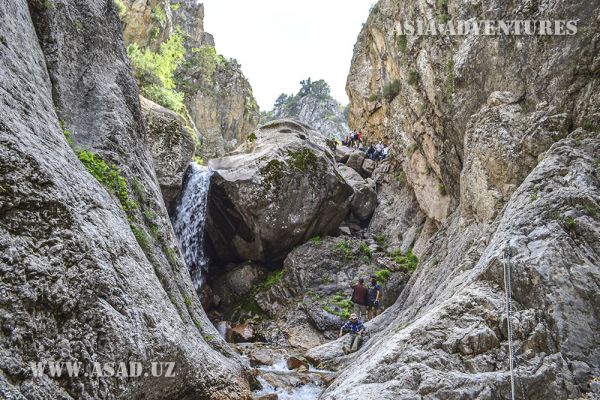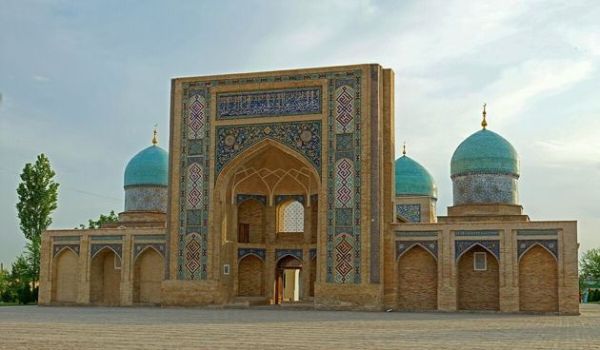Alexander Vishnevsky Cave
The cave is located in the Chul-Bair massif of the Surkhantau range in the Surkhandarya region of the Republic of Uzbekistan.
The cave is located in the Chul-Bair massif of the Surkhantau range in the Surkhandarya region of the Republic of Uzbekistan.
The cave was discovered in 2015 during a joint expedition conducted by the Yekaterinburg Speleological Club (CGS) and the Association of Speleologists of the Urals (ACS), a search group led by Vasily Samsonov (Orenburg) and surveyed to a length of 400 m and a depth of 70 m. The pioneers gave the cave the conditional working name CB-15.
The cave is located in the eastern wall of the massif at an altitude of 3540 m.n.o.m. The cave is named in memory of the outstanding Soviet and Russian speleologist Alexander Vishnevsky, the organizer and leader of numerous expeditions to explore the caves of Central Asia, under whose leadership a depth (amplitude) of 1415 m was reached in the Boy Bulok cave.
In 2016, the cave was continued by a group led by Vasily Samsonov and traversed to a length of 1,500 m and a depth of 260 m.
In 2017, the CGS, together with the ACS expedition led by Vadim Loginov (Yekaterinburg), examined the cave for a length of more than 5 km and a depth of 735 m. Two underground camps were organized in the cave. Further progress was blocked by a siphon.
In 2018, work in the cave continued with a joint expedition of the Yekaterinburg Club of Speleologists (CGS) and the Association of Ural Speleologists (ACS) with the support of the Russian Geographical Society (RGS) and the French Federation of Speleology (FFS).It was not possible to bypass the siphon during the expedition, but more than 2 km were surveyed. There are many moves and promising work points are outlined.
In 2019, a small but ambitious expedition of the Yekaterinburg Club of Speleologists (CGS) and the Association of Ural Speleologists (ACS), with the participation of Moscow and Irkutsk speleologists, was able to bypass the siphon and, overcoming the problematic narrowness, reached new volumes and went to a fantastic depth of 1131m. The length of the cave was almost 8004 m. Due to the classic lack of time and equipment, work was suspended in front of the approximately 20m deep well.
In 2021, a small (but ambitious) expedition, which involved speleologists from Russia, France, Switzerland, and Slovenia, continued its work with the main goal of connecting the caves of A. Vishnevsky and Boy Bulok. Unfortunately, the difficult terrain of the cave and the complexity of the work have not yet allowed the caves to be connected, but they have brought the potential junction point closer to 70 m in a narrow meander. In the cave of A. Vishnevsky, a new depth of 1283m was reached, more than 400m new passages were filmed, and many ascending tributaries were discovered.
The cave is developing towards the deepest cave in Asia, Boy Bulok, and according to the results of the topography, only about 70m horizontally remains before the 2 caves are connected into one grandiose system. In this case, the system is more than 2 km deep and more than 30 km long. It will become the third deepest cave in the world after A.Verevkin Cave (2212m) and Kruber Cave (2199m), which are located in Abkhazia.


